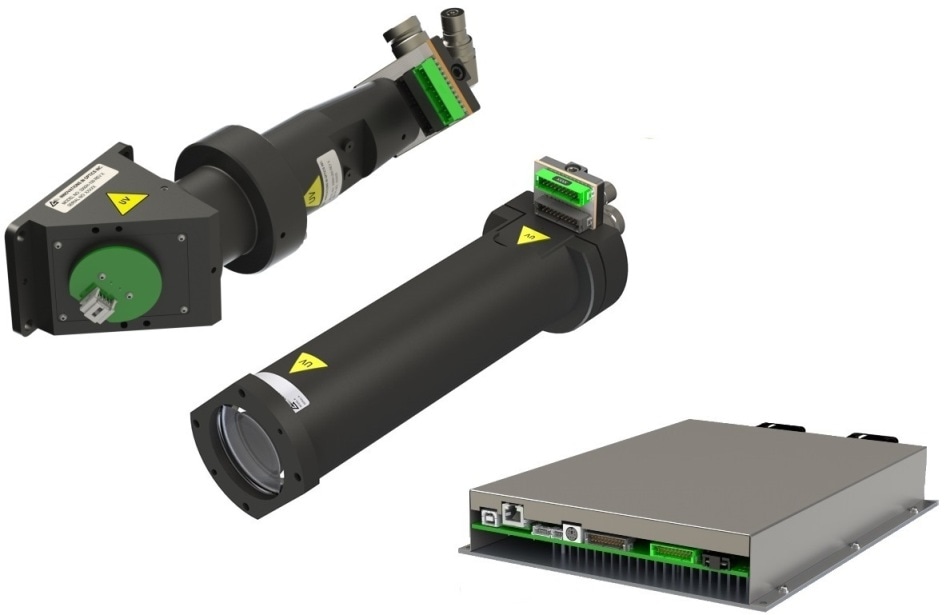Innovations in Optics, Inc. offers total solutions that pair high-power UV-LED Illuminators with Precision Driver/Controllers for Digital Light Processing (DLP®) applications in 3D Printing and Maskless Photolithography. The UV-LED technology offers more reliable and economical advantages over lasers and arc lamps in UV DLP systems. Optical power from these UV-LED systems can exceed 35 Watts of incident flux onto the active area of the DLP.

The Model 3300 series of UV-LED Illuminators for DLP comprise a densely packed UV-LED array. The illuminators are optimized to support the larger of TI’s chipset families, DLP7000, DLP9000, and DLP9500. Standard LED center wavelengths range from 365 nm to 435 nm. Single or multi-wavelength configurations are possible. Up to 18-die integrated into the UV-LED array of the 3300 series illuminators can be driven and modulated independently. Recirculated liquid-cooling allows the UV-LED array to be operated at a very high current density. The result is an extremely high power, highly uniform UV-LED illuminator providing unprecedented speed and resolution for UV DLP applications.
Specific models for 3D-Printing in the 3300 series of illuminators feature optical correction of keystone distortion which preserves pixel resolution, reduces stray light and improves image contrast. Models used for maskless photolithography to manufacture printed circuit boards feature multi-wavelength LED arrays to support many photoresists ranging from general purpose dry film to conventional solder mask. A controllable combination of different light wavelengths optimizes the spectral balance of the exposure for all types of UV processed materials.
The 5500 series of digital driver/controllers is specially designed to ensure maximum output and lifetime from Innovations in Optics’ 3300 series UV-LED illuminators. The driver/controllers provide precise, independent, constant current of up to 3A per die to achieve optimal performance. Independent current control to each UV-LED die achieves optimal performance and lifetime by ensuring uniform current density throughout the entire LED array. The 5500 system additionally includes the ability to monitor a temperature sensor that is installed in all illuminators, and a photosensor input for monitoring light output from specific illuminator designs.